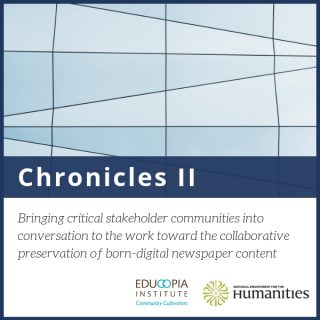June 8, 2015
Scanning the Environment: North Carolina Born Digital News Preservation Practices 2015
What little is known about news preservation practices in the United States is alarming. In 2012, the Pew Research Center’s Project for the Excellence in Journalism cited that already “the emerging world of community online news, less than a decade old, can be difficult to access.” A 2012 survey of news librarians conducted by the Educopia Institute and The Bishoff Group concurred, revealing that most U.S. newspapers are maintaining their digital news files primarily for nearterm access (five years or less), and are not yet seeking to ensure the longevity of this record. A 2014 survey of news publishers conducted by Reynolds Journalism Institute in Missouri similarly demonstrated that most American media enterprises fail to adequately process their borndigital news content for longterm survival. And a 2014 survey conducted by the University of Maine showed that while around 50% of the responding news organizations report that they are maintaining content, they largely report doing so by “storing files on servers, in the cloud, and through a third party service”actions that are unlikely to qualify as “preservation”.
If publishers are not preserving this content, who is? Historically, libraries, historical societies, and archives have collected print and microfilmbased news. But are these organizations collecting borndigital news content?
To answer this question, a team of researchers in North Carolina conducted statewide surveys in 2015 directed at two groups: journalists and librarians/archivists. The results of this investigation are included in the PDF download to the left.
